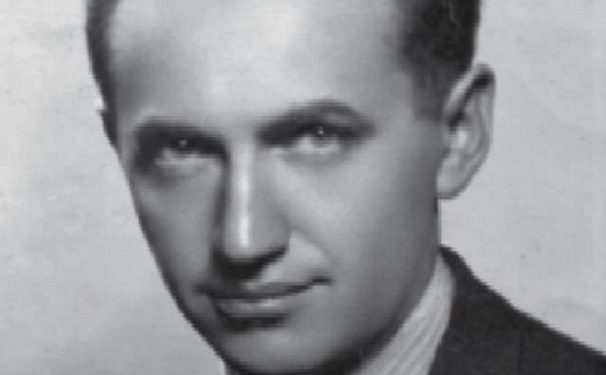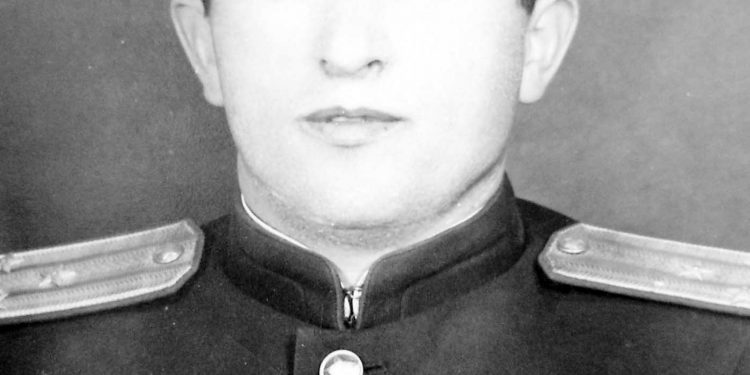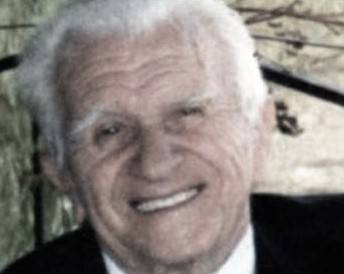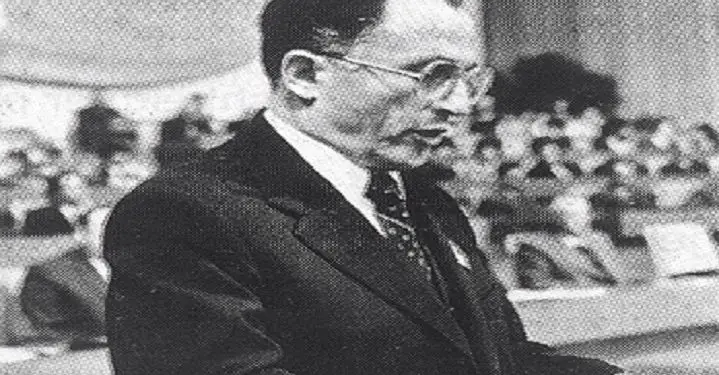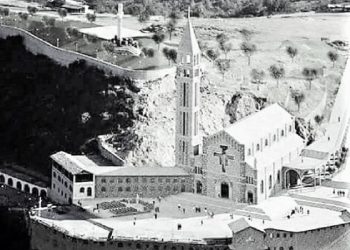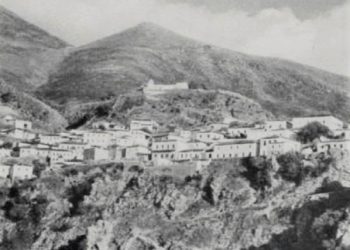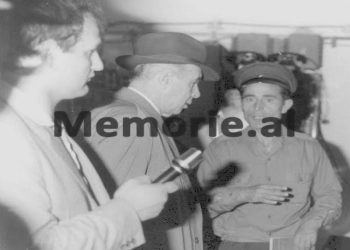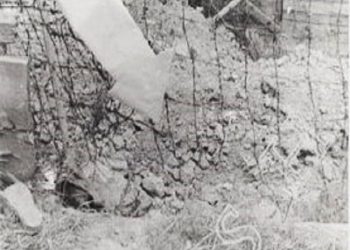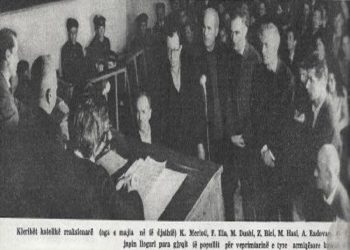From AFRIM IMAJ
Memorie.al / It has often been spoken and written about this way of tracking in the communist regime, even secret eavesdropping in the bedroom has been mentioned here and there, but the statements have remained in the framework of general evidence. For the first time, we discovered an authentic document of the secret police, with the official procedures of the repressive mechanism, which kept citizens under surveillance even in intimate moments, in the bedroom.
File No. 100, “Top Secret” (dated 29.07.1978) of the Special Directorate of State Security, alias, the Department of Apparatus and Wiretapping Devices in the Ministry of Internal Affairs, contains the materials of a secret analysis, on cases of failure, during tracking operations with special equipment against anti-party elements. The subject of the review, according to the document, is “the weaknesses and flaws that have given rise to the processing facility to discover the interception device in his apartment”.
The events take place in the village of Kutalli in Berat, in the summer of 1978. Initially, the Department of Security informs the Interior Department to prepare an apartment for the family of the enemy Vasil Kati, who was transferred there from Tirana, after being sentenced for sabotage and anti-party attitude. The task specifies the address of the apartment and how to place the surveillance devices in it. As it is reported from Berati about the adaptation, according to the shelter criteria for the former Deputy Minister of Trade to the number two of the Security, Feçor Shehu, from Tirana, the family of Isuf Alibali, the former editor-in-chief of the magazine “New Albania”, is leaving for Kutalli with the order to shelter there.
Exactly, this is where the first crack begins. The newcomer, the next day, expresses strong doubts about the presence of surveillance devices in the apartment. This alerts the Internal Affairs Branch of Berat, which reacts immediately to confirm the assertions of the former editor-in-chief. Despite the findings of the secret control at Alibali’s house, where the inaccuracy of his assertions was proved, the Security authorities operate quickly, transferring him to another residence. Beyond the chronology of the event, the analysis document also describes many other issues “for increasing the quality of tracking work”, “for adding interception devices in the conditions of the expansion of hostile activity”, “for the sophistication of technical procedures, in order not to deciphering subversive practices”, etc…!
DOCUMENT
FILE No. 100
Analysis of the weakness and defects in the work with the operative technique.
On the basis of the report-proposal dated 15.12.1977, made by the Berat Interior Branch, approved by the Deputy Minister of Interior Affairs, Feçor Shehu, two rooms and a kitchen in the Kutalli village of the district were equipped with stationary operative techniques (surveillance equipment) of Berat, where the family of the convict Vasil Kati, object of the line of the Special Branch, would be settled.
The device was installed by the Operative Worker of the T.O. (operational technique) of the Fifth Branch, Sotir S., assisted by the Operative Worker of the T.O. of the Berat Branch, Androkli T., and it was done in one day, as it was supposed to bring the family that was going to be placed there urgently. At the time the equipment was installed, no family had entered the building, even part of the rooms (except those where the equipment would be installed) were still not completely plastered. During the time that the work was done, nothing negative was found by the comrades in charge of this task, which endangered the decoding of the works and the establishment of the T.O.
After the deployment of the technique, despite the urgency presented by the Special Branch and the Internal Affairs Branch, Berat, the family of the convict Vasil Kati, was not brought to the apartment that was decided to be brought. On 17/4/1978, Isuf Alibali and his family, object of the line of the Special Branch, settled in its place. The placement of this object in the apartment equipped with TO, was made according to the report-proposal of the Berat Interior Branch, approved by Feçorr Shehu.
As an interception point, the apartment of the member of the Party, Besim P., chairman of the People’s Council of the Kutalli Cooperative, who has only his wife and two small children and lives in two rooms and a kitchen, one floor below the facility, was used of processing, a person quite predisposed to help the Security agencies. From 22/12/1977, until 17/4/1978, when the Isuf Alibali facility was established, the keys to the apartment equipped with T.O. were kept by friend Besim P., and according to the rules, checks were made by the Operative Worker of T.O. , in the Berat Branch.
On 17/4/1978, i.e., the day the object was placed; it was done by sh. Androkli T., interview with T.O. Nothing of operational interest has emerged from the interception. There were only conversations between family members about the placement of loot, etc. Even from the six subsequent interceptions, it turns out that no hostile conversation took place, which indicates that they have preserved the possibility of interception with T.O.
At the beginning of May 1978, the object Isuf Alibali, in a meeting with the head of the Berat Branch, Pëllumb Kapo, and with his friend Çome Asimaqi, denounced that; while he was cleaning the room, in a corner of it (without specifying in which room), he had found a piece of pipe, placed on the wall, and had left it in place without touching it. He also expressed the opinion that this tube should have been placed for the control of Vasil Kati’s family, which was supposed to be brought to this apartment, before his (Isufit) arrival.
To prove these claims, on 27/5/1978, the object (Isuf Alibali), his wife and son left with a combination and with a secret opening, they entered the apartment to see the situation, friends Agim Ç., and Sotir S., who found:
a – In the lock hole of the outer door, where the key is inserted, two match pins were placed to distinguish whether the apartment could be entered while the subject was not at home. In addition, the door was locked with another “Elezet” key. The opening and closing of the outer door was done without leaving a trace, while the inner doors were found and left open.
b – On the side of the kitchen wall, but in the opposite direction to the side of its wall, which separates it from the other room (the bedroom) and where the T.O. pipe is located, a horizontal hole was made, 2×2 cm in size and about 2cm. above, from the level of the floor tiles.
c – On the inner face of the wall, which separates the room next to the kitchen from the other room, there were two holes, one with a size of about 10 x 15 cm., which was again covered with plaster, while the other, with a size of 4 x 4 cm., but they leave it open. Judging these actions carried out by the processing facility, the comrades tasked to see the situation, concluded that; T.O., was not found by him.
After this verification, even in two subsequent meetings with friends Nevzat Haznedari and Çome Hasimaqi, although he was told, in order not to have illusions and useless doubts, the object insisted that T.O. was placed in his apartment, that he had found a piece of pipe , which he had left in place, covered with plaster. According to Isufi’s claims, he did this, based on two main circumstances: First, when he was working as the editor-in-chief of the “New Albania” magazine, from reading foreign literature, he had learned about the existence and ways of placing T.O in capitalist countries, for which he had written an article in the magazine “In the service of the people”, on the use of T.O. in the USA.
Secondly, in the rooms of the apartment where he was placed, he found that the last zone of the rooms (20-30 cm. above the floor) differed in painting from the rest of their surface. To put an end to these claims, as well as to be fully convinced whether T.O. was found or not, the object was removed, being placed in another apartment. Meanwhile, it was reviewed by the friends of the center, headed by Nevzat Haznedari, the way of placing the technique; the excavations made from the object, as well as dismantled the tools of T.O. From the work done, it was concluded that; none of the excavations of the object affected the T.O. tools.
Not finding T.O. from the object, it is confirmed:
First, from the normal operation of the T.O., at the time it was dismantled. This fact refutes the object’s claim that, according to him, he found a piece of pipe and covered it again with plaster, because if this had happened, the microphone connected to this pipe would not work at all.
Secondly, none of the excavations carried out by the object attacked the TO, because they were carried out far from its location (see the attached diagram, which reflects the places where the TO is located and the excavations done by the object).
Thirdly, if the pipe had been found in the room, as the object claims, the microphone would have been discovered, whereas in fact, no attempt was made, but it was dug into the opposite side of the wall, which separates this room from the other room.
Fourth, during the dismantling of the TO tools, it was found that the excavations made by the object had not affected any of the technical tools.
Fifthly, if the object had found, as it says, the technical pipe in the wall, there was no need to cover the electric cord tubes of the light bulbs with plasticine, which, as the object itself admits, it did this in consultation with the Bektesh (family members of Sadik Bektesh, the former general convicted of treason), to protect themselves from interceptions with T.O.
The closing of the electric cord pipes was also established by us, or there was no need to continue searching for the technician even after the secret entrance to his apartment, because it was established that he had made another excavation, in one of kitchen corners, size 15 x 15 cm. and had closed it again with plaster.
Although from the operative technique, the object was not physically found, based on the knowledge he had about it, in the conversations with the enemies; Sadik and Hava Bekteshi, on the possibility of deploying the technique (the object admits that Havaja told him that operative technique is also placed on the benches outside the apartment), has concluded; on the possibility of placing T.O. in his apartment.
The main weaknesses of our work and their causes are:
1 – It is true that the doubt in painting the rooms exists, as the object claims. This change, from which he created doubts about the existence of T.O., is visible not only inside the rooms, but also in the corridor. This way of painting (the last strip with a brush and the entire other surface with a pump) can attract anyone’s attention and create suspicion. Exactly, here lies the responsibility of comrade Sotir S. He ignored this fact, and therefore, placed T.O. in unsuitable conditions. He had to necessarily request or make the same painting of all the surfaces of the rooms; otherwise he would refuse to place the T.O.
From the poor quality work of the construction workers, in almost all the rooms, even in the vicinity, where T.O. was located, there were marks (stains), which for a smart and capable person, create doubts, like garbage of a job done after plastering and for certain purposes. Even these signs, which give rise to curiosity and give rise to actions (excavations), which can lead to the deciphering of the technique, have not been eliminated due to lack of depth and vigilance.
These mistakes show not only shallow work without quality, but at the same time, professional poverty and display of arrogance, i.e. these displays are characterized by underestimation of the enemy. Our responsibility for these errors becomes even more serious, due to the fact that they are almost of the same nature as the errors proven in the Rrëshen Internal Branch, a year ago, as a result of which the defendant’s T.O. was deciphered. The repetition of this mistake proves that Bilo B. as the head of the Vth Branch, Sotir S., who allowed it, and Metan K., as the corresponding management officer, have not yet learned the appropriate lessons and has not taken measures complete, for timely avoidance of these weaknesses.
Agim C. is also responsible, because when he was sent with a secret entrance to Isuf Alibal’s apartment, to prove the object’s claims regarding the placement of T.O., he did not find the above deficiencies and did not raise them as a problem to be corrected. Although the method used for the assembly of the stationary centers of T.O. has been right both in terms of keeping the secret and the quality of listening, it is necessary that it be perfected further, in order to adapt as best as possible to the abilities of people, especially the persons who were the object of work, for Security agencies. Here it is said that according to the danger and object of the processing, in any case, other deployment variants should be considered, in order to avoid at all costs the decryption of the TO by the enemy.
Placement of stationary centers of T.O. according to the practice used for years, it was considered normal and sufficient when they were few in number and the level of people was not what it is today, but not complete and sufficient for the current conditions when the number of people has increased and the enemy’s activity is sophisticated.
Precisely because it was not changed at the right time in the specific case, therefore the T.O. was almost revealed to us, as the comrades strictly adhered to the old practice, contenting themselves with the work done by the Technical Operative Workers and did not organize additional control, in order to was convinced even better, on the quality of the work performed and on taking all the measures, for the liquidation of any trace or sign, which creates doubts and can become a cause, for the deconspiracy of the means of T.O.
Driven by good intentions, in order to contribute to the discovery of the enemy’s activity, there have been cases where concessions have been made and hasty works have been carried out. This way of acting with a liberal and conformist character has led to the fact that, unintentionally, not all due care has been paid to the quality of the work, to the complete elimination of the remaining signs, as happened in the apartment where the Isuf Ali Bali object was placed and that gave support to the latter, to conclude on the possibility of the existence of T.O.
It happened in the case of Kutallia that the equipment was requested urgently, thus prompting the Technical Operative Workers to complete it within the day, the object that was intended was not brought and the apartment remained empty for about 4 months. So the order was not as urgent as it appeared.
For the object Isuf Alibali, who was later placed in the equipped apartment, nothing was said about his dangerousness, especially about the knowledge he had about the existence and use of T.O., a moment which, not only had to be taken into account, but even to judge and conclude together, whether it should be put in that building or taken to another place. From now on, every stationary equipment with T.O. should be subjected to a deep study, to first conclude on the dangerousness of the object, on the necessity of the placement of the stationary center and on the measures to be taken regarding the complete preservation of secrecy during the works for the establishment of T.O. After their placement, control should be exercised by the head of the Branch and another friend, who did not participate in the works, to make sure that the work performed ensures the preservation of the T.O. from decryption. Memorie.al




